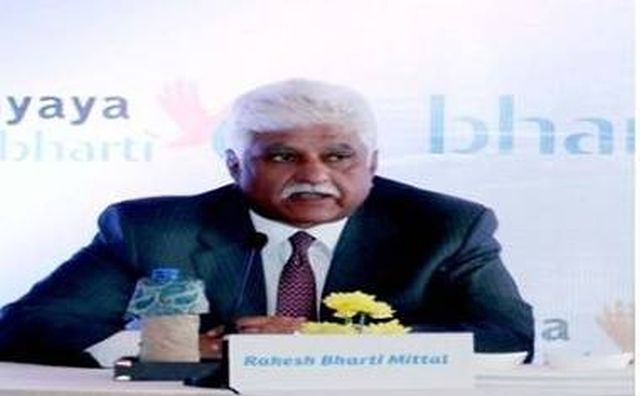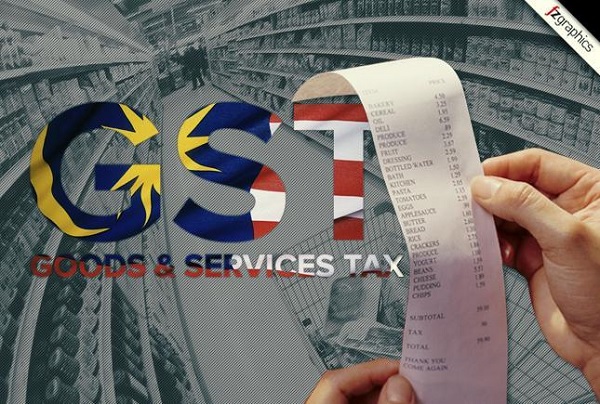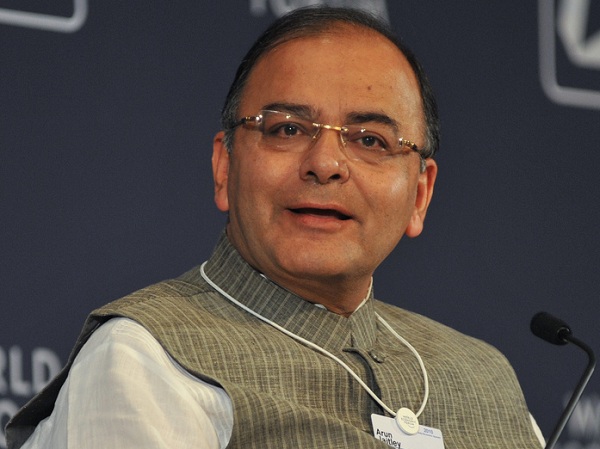
by admin | May 25, 2021 | Business, Economy, Large Enterprise, Markets, News

CII President Rakesh Bharti Mittal
New Delhi : Industry chambers Confederation of Indian Industry (CII) on Monday said that it expects India’s economy to grow at 7.3-7.7 per cent in 2018-19 on the back of “sustained structural reforms”, recovery in global markets and a normal monsoon.
The industry body in a statement said that “sustained structural reforms” have led to a rebound in the country’s economy as businesses across several key sectors experience firm growth trends.
“The impact of sustained structural reforms is now being felt on the ground as a mammoth economy is turning around,” CII President Rakesh Bharti Mittal was quoted as saying in a statement.
“Businesses across several key sectors are experiencing firm growth in sales and orders, indicating better capacity utilisation and higher investment expectations.”
According to CII, strong rural consumption is reflected in sectors such as consumer non-durables, two-wheelers and tractors.
“The feedback from businesses is that the rebound in the economy is now firmly entrenched and the positive impact of the actions taken by the government, including major structural reforms, are being felt on the ground,” Mittal added.
The industry body credited the growth trend on prudent macroeconomic management which it said has encouraged “growth and investments for capacity expansion are being planned as demand conditions recover”.
“The government has avoided slippage in the fiscal deficit despite the rise in oil prices. Inflation too, has remained under control to the extent possible even as cost of oil is going up,” the statement said.
CII noted that “capital goods” sector has shown a steady improvement and order books are filling up. This sector is a key indicator of a country’s economic activity.
“Exports too, are poised to grow at a faster pace in the current fiscal year, which started on a good note,” the industry body said.
The CII statement pointed to eight key areas where reform measures have “unlocked growth forces” like the introduction of the GST; strong emphasis on ease of doing business; Insolvency and Bankruptcy Code; increase in the the Foreign Direct Investment (FDI) limits in sectors such as insurance, real estate and defence manufacturing.
Besides, a rise in infrastructure spend; initiatives to strengthen micro, small and medium enterprises (MSME) and “initiatives in agriculture have helped improve rural incomes”.
In addition, CII said that introduction of fixed term employment across sectors “will impart flexibility to the use of labour”.
“With several major development campaigns such as Make in India, Digital India, Swachh Bharat, Clean Energy and others gaining traction as well as recovery in the global economy and expectations of a normal monsoon, CII expects growth to record 7.3-7.7 per cent in 2018-19,” the statement added.
—IANS

by admin | May 25, 2021 | Economy, Markets, News
 New Delhi : Noting that the GST anti-profiteering clause could lead to hardship, industry chamber Assocham on Sunday urged more clarity in rules to curb price hike arising from a rollout of the new indirect tax regime, saying tax authorities will need to be more sensitive to avoid undue harassment of assessees.
New Delhi : Noting that the GST anti-profiteering clause could lead to hardship, industry chamber Assocham on Sunday urged more clarity in rules to curb price hike arising from a rollout of the new indirect tax regime, saying tax authorities will need to be more sensitive to avoid undue harassment of assessees.
The industry body said in a statement here that there is concern about practical and procedural challenges emerging during the initial implementation period of the anti-profiteering clause under the Goods and Services Tax (GST) regime which was rolled out last July.
“With the National Anti-Profiteering Authority being established, the Confederation of Indian Industry (CII) has called for greater clarity in rules to curb price increase arising from GST,” it said.
“Practical implementation of the regulations without ambiguity and without untoward scrutiny is required, particularly in the initial days of implementation till the system stabilizes.”
Noting that the anti-profiteering clause was brought in to keep a check on unethical high profits, analyse long-term effects of GST, control price rise and retain consumer trust in the new tax regime, Assocham said the relevant rules say “benefit of input tax credit should have been passed on to the recipient by way of commensurate reduction in prices”.
“However, as this definition is not clear, discretionary bias may creep in,” the statement said.
CII noted that several factors contribute to pricing decisions, such as supply and demand conditions, as well as suppliers’ costs and taxes.
“The anti-profiteering clause of GST law should provide clarity on rules and regulations regarding assessment of valuation and impact of taxes,” it said.
“Tax authorities will need to be sensitive to natural business outcomes and avoid undue harassment. Also, the clause gives relatively less time for adoption of the new provisions. Manufacturers or suppliers may also deal in several products that are not distinguished in their accounting books, so that determining price margins for individual products will be difficult.
“Effective anti-profiteering provisions that are clear are needed to ensure GST provides tax benefits to consumers,” the statement added.
Maining the most radical reworking of the items within the GST four-slab tax structure in November, whereby all but 50 of over 1,200 items remained in the highest 28 per cent bracket, the GST Council, however, also withdrew the novel facility of input tax credit for restaurants as they had not passed on this benefit to consumers.
—IANS

by admin | May 25, 2021 | Business, Investing, Large Enterprise
 New Delhi : Around 80 Indian companies in Germany employing a total workforce of 27,400 generated combined revenues of Euro 11.4 billion in 2016, the Confederation of Indian Industry (CII) said on Sunday citing its joint study conducted on the matter.
New Delhi : Around 80 Indian companies in Germany employing a total workforce of 27,400 generated combined revenues of Euro 11.4 billion in 2016, the Confederation of Indian Industry (CII) said on Sunday citing its joint study conducted on the matter.
Based on interviews with leading Indian chief executives, the study, done by the Bertelsmann Foundation, Ernst & Young (EY) and CII, showed that, since 2010, nearly 140 major investment projects by Indian companies have been initiated in Germany.
“This includes FDI (foreign direct investment) announcements as well as M&As (merger and acquisitions),” a CII release said here.
“Between 2010 and 2016, Germany was the second-largest recipient of Indian FDI in Europe with 96 projects,” it said.
According to the study, the top sectors for investment include automobiles, metals and metal processing, professional, technical and scientific services, pharmaceuticals and chemicals, electrotechnics and machine building.
The study found that Indian companies in Germany currently generate nearly 70 per cent of their turnover in the labour intensive sectors of metals (40 per cent) and automotives (29 per cent). Major players in these sectors are Tata Steel, Hindalco industries and Sona Autocomp.
“The Indian IT industry accounts for a revenue share of nine percent,” CII said.
Access to innovation and technology are important factors that influence the decision to invest in Germany, according to 80 per cent of the CEOs surveyed.
This is borne out by the M&A activity over the past six years, CII Director General Chandrajit Banerjee said in the statement.
“In fact, one-fifth of the acquisitions made by Indians were found to be in the automotive supplier sector and one-third in the mechanical engineering sector,” he said.
“Moreover, the planned merger of the steel businesses of Tata Group and ThyssenKrupp has taken Indo-German cooperation to a whole new level,” he added.
According to Murali Nair of Bertelsmann Stiftung, Germany should put more focus on government incentives in innovation, such as tax relief for depreciation, in order to encourage long-term commitment of foreign investors.
Besides, 90 per cent of surveyed Indian CEOs were of the opinion that Britain’s exit from the European Union will increase the attractiveness of Germany as an investment location and will help increase the volume and diversity of Indian investments in the country.
—IANS

by admin | May 25, 2021 | Business, Economy, News

Union Minister for Finance, Corporate Affairs and Information & Broadcasting, Arun Jaitley
Kolkata:(IANS) Terming the recent relaxation of foreign direct investment (FDI) in 15 sectors of the economy as union Finance Minister Arun Jaitley’s “Diwali gift”, the Confederation of Indian Industries (CII) on Wednesday said it was expecting more such moves in the “times to come”.
“This is a clear and strong message that reforms are not only on track but are going to be aggressive. For the markets and for industry, there could not have been a better Diwali gift,” CII director general Chandrajit Banerjee said in a statement.
The association said the relaxation comes at a time when the country needs to attract as much investment as possible to create jobs and move the economy to a higher growth trajectory.
It opined that the move will be “immensely helpful” in boosting the investment environment in the country.
“We understand that the crux of these reforms is to further ease, rationalize and simplify the process of foreign investments in the country and put more and more FDI proposals on the automatic route instead of the approval route, and that is most welcome as an approach,” said Sumit Mazumder, the industry body’s president.
“Today’s announcement is yet another huge step in making it easier to do business in India.”
The statement said the FDI relaxation in some of the most critical sectors of the economy augurs well to bring in vibrancy in the sectors in the midst of a depressed global economic sentiment.
Defence, construction, civil aviation and media are some of the key sectors where foreign investment have been liberalized more while norms for sectors including single-brand retail and private banking have been eased.

by admin | May 25, 2021 | Corporate, Corporate Governance
 New Delhi:(IANS) There are signs of a recovery in the economy, albeit a slow one, the Confederation of Indian Industry (CII) said on Sunday.
New Delhi:(IANS) There are signs of a recovery in the economy, albeit a slow one, the Confederation of Indian Industry (CII) said on Sunday.
“What is especially significant is that there are fewer sectors anticipating negative growth,” CII Associations’ Council (ASCON) chairman Naushad Forbes said in a statement here, releasing a survey on the issue.
“There has been a significant and perceptible positive movement in percentage points recorded by many of the sectors which were in moderate and negative growth category a year ago,” Forbes said.
The survey by ASCON for the April-June first quarter, based on responses collected from sectoral industry associations, reveals a slight improvement in growth trends in production over the corresponding period a year ago.
Of the 93 sectors polled, 16.1 percent recorded excellent growth of more than 20 percent during the quarter in question as compared to 7.1 percent in the year-ago period.
However, the share of sectors that saw high growth rates of between 10 to 20 percent has reduced significantly to 9.7 percent in the April-June quarter from 14.3 percent during the same period of the previous fiscal.
The survey tracked the estimated growth trends in terms of production, sales and exports.
Responses were classed under four broad categories — excellent (growth in excess of 20 percent), high (growth in the range of 10-20 percent), moderate (0-10 percent) and negative (below zero).
The share of sectors reporting moderate growth declined marginally to 51.7 percent during the quarter as compared to 51.8 percent in the period a year ago.
urther, the number of sectors recording negative growth has fallen from 26.9 percent in the first quarter last year to 23.6 percent this year.
On the other hand, the survey’s respondents cited industrial relations, transport infrastructure bottlenecks and the cost and availability of finance as moderately important factors impeding growth.
“On the issues impacting growth, margin pressure from stiff competition, competition from imports, shortage of power, high regulatory burden, lack of domestic and export demand, shortage of skilled labour and talent, and high tax burden have been cited as the most important constraints by more than 50 percent of the respondents,” the CII said.
“However, a sustainable recovery would be conditional on improvement in domestic demand and investment revival,” it added.





